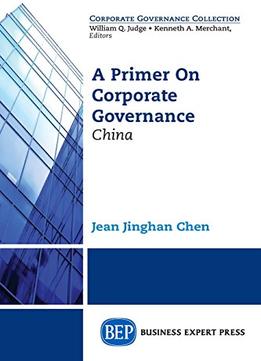
A Primer On Corporate Governance: China
by Jean Chen /
2015 / English / PDF
2 MB Download
Firm-level corporate governance practices vary widely according to country-level factors. Understanding national institutions and the legal system, the evolution of corporate formation and how these factors impact firm-level corporate governance practice is therefore fundamental to assessing the effectiveness of both internal and external corporate governance mechanisms. This book will take an in-depth look at the corporate governance system in China, the largest emerging capital market in the world that has faced increasing governance mechanisms and enforcements in the last decade. More importantly, these governance mechanisms and enforcements have been driven not only by the globalization of markets, but also by internal economic and political forces, resulting in a unique governance system. The main goal of this book is to describe unique Chinese corporate governance features and examine the main factors that have shaped the Chinese corporate governance system. The first and second parts of this proposed book are to review and analyze the Chinese economic reforms since 1980s with particular reference on the privatization of State-owned enterprises. This development has not only shaped the external corporate governance system but also heavily influenced the internal corporate governance and management accountability in China. The second part will focus on the institutional changes resulted from the Chinese economic reforms, in particular the development of Chinas capital market and corporate governance code and related regulatory framework. The third part will evaluate specific firm-level governance features of Chinese listed companies, including board structure and directors, ownership structure, the roles of the state and institutional shareholders, and executive compensation. The evolution is not only based from the data obtained from public domain, but also a review of academic literature. The final part concludes the book with a summary of current and future governance challenges in the Chinese economy.










